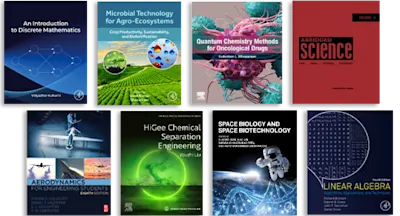
Principles and Applications of Antimicrobial Nanomaterials
- 1st Edition - August 25, 2021
- Latest edition
- Author: Joseph L. Graves Jr
- Language: English
Principles and Applications of Antimicrobial Nanomaterials introduces the reader to the microbial world, antimicrobial nanomaterials, how microbial evolution works, and how knowl… Read more

Principles and Applications of Antimicrobial Nanomaterials introduces the reader to the microbial world, antimicrobial nanomaterials, how microbial evolution works, and how knowledge of these areas can facilitate the development of sustainable antimicrobials.
Due to the widespread occurrence of multidrug-resistant microbes, there is an increasing interest in the use of novel nanostructured materials as antimicrobials. This book is designed to help researchers from fields such as materials science, nanoscience, and nanoengineering who are attempting to develop these antimicrobial materials.
- Provides crucial background in microbiology and microbial evolution to help researchers design experiments that can produce sustainable results
- Offers detailed coverage on the antimicrobial properties of different types of nanomaterials
- Discusses the major challenges of using nanomaterials for antimicrobial applications
Materials scientists and engineers
Section One: Nano and Microbes, A Brief History1. The Nanoscale: Definitions2. Characteristics of nanomaterials: Composition, coating, size, shape, surface properties, physical properties (inorganic, polymeric)3. Manufacture of nanomaterials - environmental exposure, toxicity, green synthesis, and sustainability4. Natural nanomaterials - microbial exposure5. MDR microbes and the "magic bullet." - metallic, metallic oxides - NPs
Section Two: Microbial Diversity6. Three Domains of Life - Structure and Function (Bacteria, Archaea, Eucarya)7. Bacteriophages and Viruses (not alive, but important)8. Microbial view of the periodic table9. Microbial defense
Section Three: Microbes and Why they Matter10. Food - Spoilage, Preservation, Industrial Microbiology11. Environment - Biogeochemical Cycles, Pollution12. Microbiomes - Naturally occurring and engineered13. Disease - Infectious (acute/chronic)14. Pharmaceuticals/Biotechnology - engineered proteins, vaccines, DNA vaccines
Section Four: Microbial Evolution15. Organic Evolution: Principles16. What Darwin Never Saw: How things differ between the microbial and macroscopic world. (Horizontal gene transfer, co-selection, persister cells)17. Classic studies of microbial evolution (antibiotic, metal)18. Evolution and nanomaterials (silver, copper, iron, gallium)19. Conclusion: Towards Sustainable Antimicrobial Nanomaterials
- Edition: 1
- Latest edition
- Published: August 25, 2021
- Language: English
JG